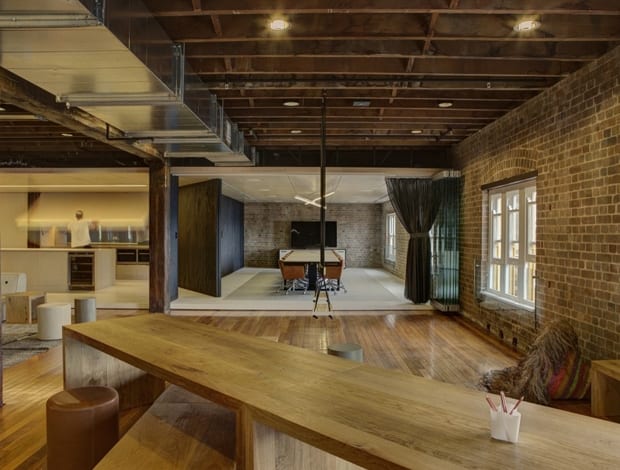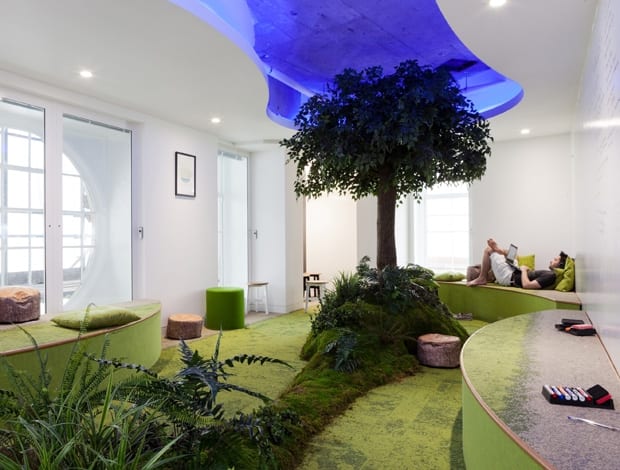 ||
||
I don’t want to become American again,” says product designer Todd Bracher. I catch up with him at the launch of his new table for Fritz Hansen. It’s a year and a day since he returned to his native USA, and in the preceding years he has completed rather an extensive grand tour of Europe during his career, taking in London, Milan, Paris and Copenhagen. It’s no surprise that it’s our side of the Atlantic he has most affinity with.
As his reputation as a designer of thoughtful and understated pieces grew – beginning in 2001 with an installation entitled Open Privacy that looked at codes and rules for dining in public, and a client list that takes in the likes of Zanotta, Habitat and Liv’it – it’s little wonder that Fritz Hansen came knocking. The Danish firm approached him to design what became the T-No 1 table, which was two years in the making. To complete the perfect conference room configuration, Fritz Hansen’s famous Oxford chair, originally produced for Oxford University’s St Catherine’s College and designed by Arne Jacobsen in 1963, has now been introduced at a different height. Together the pieces work as what Bracher describes as “forward heritage”.
“For some reason, I seem to do a lot work in connection with Arne Jacobsen. I feel pretty compatible with his mentality,” he says, adding modestly, “I don’t know if we’d have been friends.”
As for what he enjoyed about the design process, he replies, “I love that they have a sense of detail. They would always ask my opinion, whereas in Italy they would just go ahead.” He explains how the company offered him options on the component at the end of the leg of the table – would he prefer it to be shaped like a deer’s foot or a pig’s foot? “I chose deer of course!”
The table’s design is all about absolute efficiency. “The spine is needed to support the ribs, and the ribs need legs to get off the floor,” says Bracher, describing the relationship between the surface and the support. “No material selection is arbitrary; it is precise and integral to the object’s very purpose. All materials have an appropriate role in my designs, to communicate the object’s function and experience.” To this end, the table’s sturdy legs are made of mirror polished aluminium or black lacquer, with the table top in glass, white laminate, maple walnut or coloured ash veneer. Stacked up at the product launch, even though it feels hackneyed to say it, they really do have a sculptural quality to them.
Bracher’s personal history with Denmark and Danish design extends back to the turn of this century. “I was living in New York and had just finished school. I was designing barbeque tools and spice racks and I remember thinking, ‘This is not what I want from my life,’ so I applied for a grant and ended up in Copenhagen studying for a Masters in design. Within seven days of finding out, I was in a country I’d never visited before, but something in my gut just said go to Denmark.”
And what did he like most about his time there? “There’s a poetry to the Scandinavian design approach, and I wanted to learn about that poetry. They showed me how much they loved design. I love the culture there. The people have a real sense of humour.” Can he speak much of the language? “No, but I can tell some jokes!”
Following his graduation in 2001, Bracher went to work for Studio Giorgio Marianelli in Milan. Two years later he arrived in London to take up the post of senior designer at Tom Dixon’s eponymous furniture company and stayed until 2005. “It was an education; real deal stuff. ‘This is the way it goes, kid,’ you know. That was tough to go through but I look back and it was a good experience.”
Bracher’s product design back catalogue now extends from cooker hoods for Italian brand Elica to a wool rug collection for Urban Outfitters and the Flora vase for Georg Jensen, rows of which line the windowsills of the exhibition space chosen for the T-No 1 launch. For Zanotta he designed the Freud sofa-cum-lounge chair-cum-daybed in 2002, and three years later along came the Tod table. “The idea behind it is the story of Cindy Crawford. She’s very famous because of her beauty mark. The table acts as a beauty mark: with it, a room is more beautiful. It’s designed with the understanding that it may never work alone, but instead always next to something else.”
Bracher worked with Habitat in 2006 to produce the Masai collection of three pieces of storage. Then there’s the post of art director for Jaguar’s furniture collection, which he’s held since May 2005. “Cars are only launched every seven years, so this helps people understand where a new car is headed.”
Coming back to his Brooklyn base, how does he like to work? “On, off, on, off, on, off,” he says, “Two minutes on, one minute off, that’s how I keep a fresh eye. I used to just sit down and finish it.”
After so many international collaborations, does he now hanker for working with companies closer to home? “Furniture design in the US is just some guy in New Jersey making a chair,” he answers, only half jokingly. “There’s no intention to do anything better. There’s no demand for it. In ten years, I want to be in Tom [Dixon]’s shoes, well different shoes, but always working on brand new projects.”
As he gets up to begin his presentation on the T-No 1, he adds, “I’m not a table designer. I want to always be the guy who has no idea what he is doing.”































